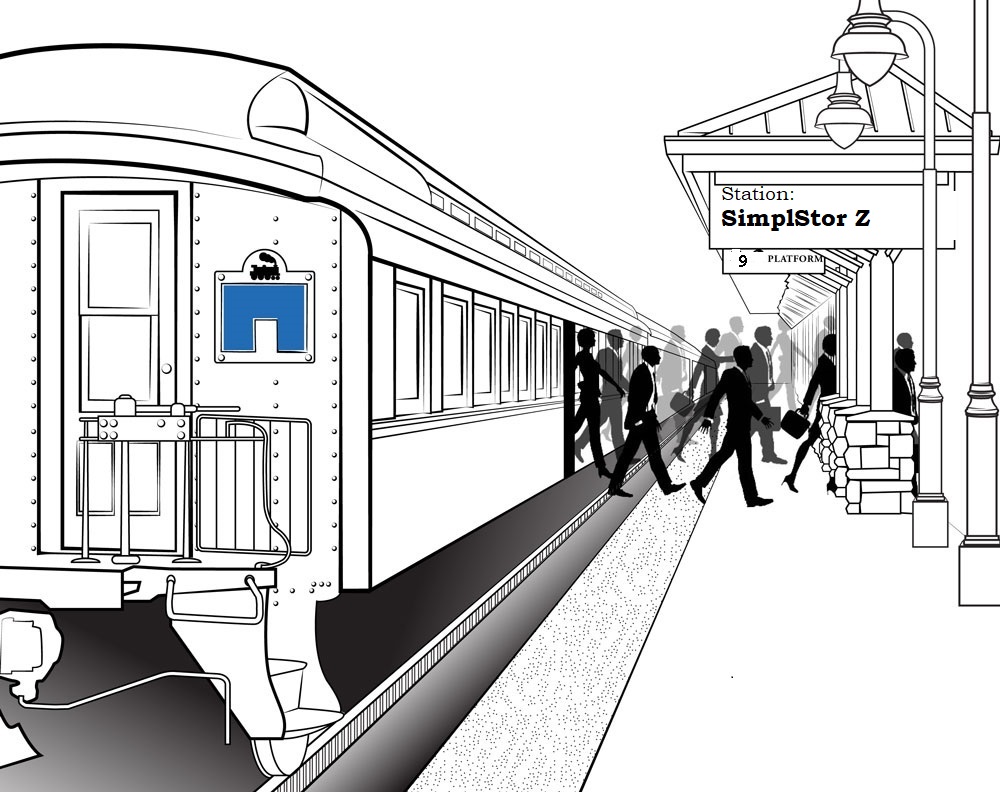About six years ago I wrote about our efforts as we began the development of our SimplStor ZFS project.
Zerowait has been continuously working to build a turnkey fully-supported Linux-based ZFS enterprise storage solution to satisfy our most demanding clients and remain affordable, easy to use, and reliable. After many years of development and testing, we recently added SimplStor Z, a ZFS open hardware design version of our proven SimplStor system that has been delivered with XFS or Windows for over a decade.
During the last few years, our team has created what I consider the next generation of Copy-on-Write file system solutions. As most of our customers and friends know, Zerowait has been working with NetApp systems since 1998, and their file system is based on a 30-year-old design from the last millennium. The Zerowait engineering team has designed and built a storage solution that is considered by many of our NetApp support customers as a replacement for their primary NetApp filer installations. Zerowait’s SimplStor Z provides ZFS functionality, is supported 24×7, all without the high prices and hassle of constant upgrades from a proprietary hardware manufacturer.
Below are the 3 questions that have come up in our conversations with customers:
ONE – How did the Zerowait SimplStor Project evolve over the last 6 years and become a Linux based OpenZFS enterprise storage solution?
Answer – The premise of SimplStor has always been open hardware, open software, and nothing proprietary, supported 24×7 by Zerowait’s proven team. Over time, Zerowait’s hardware and remote “phone home” exception monitoring systems have evolved to be faster and more capable, and as OpenZFS evolved it became obvious that merging Zerowait’s hardware and support with Linux and OpenZFS was going to be a game changer for many storage users. NetApp was essentially the first copy-on-write filesystem with WAFL, but that was about 30 years ago. Sun created ZFS about 20 years ago. After much work by the Linux community, OpenZFS has matured and now offers features that NetApp can’t touch, and we’ve added OpenZFS without any proprietary lock-ins, high prices or disruptive EOA/EOS that drives customers crazy.
Today, OpenZFS on Linux provides significant functionality beyond what NetApp, Dell/EMC or HPE can provide. But the market gap has always been an integrated and fully supported open hardware and software solution.
TWO – How did the Zerowait team design flexibility, scalability, and read-and-write performance adaptability into SimplStor Z, so that it could provide advantages to customers considering new NetApp rather than upgrading their existing filers?
Answer – Our team started with the premise that Zerowait SimplStor Z had to be like the other SimplStor models—easy to use, easy to install, and easy to maintain for the long term. We also insisted that SimplStor Z had to be as reliable as NetApp and provide a far better long-term value to our global community of support customers.
Our focus was on building a reliable and flexible OpenZFS on Linux solution that was rock solid and allowed our customers to tweak their read-and-write performance parameters to meet their specific workloads. The Zerowait engineering team worked through firmware, driver, and myriad hardware problems to create a hardware platform that provided reliability and would “call home” automatically whenever an anomaly or exception was detected. Our long-time customers know that Zerowait’s Exception Reporter is an amazing tool, and we integrated it into our RMA and Engineering ticket process so that expert storage support engineers are notified right away when a SimplStor Z system has a problem.
The SimplStor platform provides an outstanding value. SimplStor provides everything an Enterprise storage customer needs: hot pluggable components, write caches, read caches, memory options, and SAS, SATA, and SSD drive configurations. Zerowait SimplStor Z also can be configured with multi-node High Availability (HA) clustering, automatic failover, replication, robust encryption options, powerful deduplication, and cloud integration options. The open system approach that SimplStor leverages provides unparalleled functionality and flexibility not found in any other storage solution available today.
THREE – What is next on the Zerowait SimplStor Roadmap?
Answer—Zerowait created a global organization to support NetApp’s customers who wanted to keep their legacy on-prem equipment beyond NetApp’s EOA/EOS sunsetting of products. Lately, NetApp has employed a heavy hand pushing customers into the cloud. For many customers who demand control, performance, security, or on-site storage for compliance reasons, Zerowait was the solution to their NetApp mandated migration headaches. Many of these customers provided input as our SimplStor Z project evolved. Our first goal was to fulfill customers’ requirements for migrating away from their Legacy NetApp equipment and onto our SimplStor Z platform.
Some of Zerowait’s NetApp support customers have been working with us for over 20 years. There is a tremendous amount of trust between Zerowait and our family of customers. The huge tech companies that some of our team members have worked with in the past just don’t have that kind of relationship with their customers. Zerowait’s customers know that long-term service and support is key, as important as an outstanding hardware and software platform. As one of our customers said recently, “It’s refreshing to work with a support company that sells hardware that you know is built to last! “



